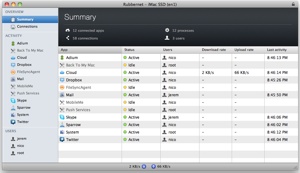Sooner or later (well, okay, later) we’ll see Macs with flexible displays. However, that groundbreaking achievement will come first with smaller devices such as the iPhone and iPad.
A flexible display is a thin, rollable display used in a variety of applications such as e-paper, digital signage, smartphones, TVs, and other consumer products. Flexible displays are on LCD, e-paper, LED or OLED. Out of these display technologies, flexible OLED display is the advanced type of display. These displays are looked upon as the future mainstream display for a number of consumer products.
There have been significant developments going on in the field of flexible electronics and printed displays. For the past few years, many industry participants and consumers have dreamed (and worked on) display technology that would break through the limitations of glass-based displays like weight, size, and ruggedness.
The advent of flexible display would overcome these limitations. Flexible display-based devices have started entering the consumer goods market. However, they’re still at the novelty stage.
Out of all the potential applications, only e-paper and e-readers have made even a dent in the flexible display market. They’re the tip of the iceberg.
There are two basic display technology types: emissive and non-emissive. Emissive display comprises OLED and e-paper display technology; non-emissive display comprises LCD and LCOS. In the overall “flexible display” market, e-paper display targets products such as smartcards, wearable displays, etc. Flexible OLED display targets smartphones, TV, laptops, tablets, etc. LCD targets e-readers, laptops, TVs, etc. However, emissive displays are more compatible as a flexible display than non-emissive.
Once the technology becomes more mainstream and pricing goes down, I’d expect the iPhone to become the first Apple product with a flexible display, and a Mac desktop the last.
Apple has certainly considered flexible displays. This year the company filed a patent (number 2012129247) with the U.S. Patent & Trademark Office for “electronic devices with flexible displays.”
Here’s Apple’s description of the patent: “Electronic devices may be provided that contain flexible displays and internal components. An internal component may be positioned under the flexible display. The internal component may be an output device such as a speaker that transmits sound through the flexible display or an actuator that deforms the display in a way that is sensed by a user. The internal component may also be a microphone or pressure sensor that receives sound or pressure information through the flexible display. Structural components may be used to permanently or temporarily deform the flexible display to provide tactile feedback to a user of the device. Electronic devices may be provided with concave displays or convex displays formed from one or more flexible layers including a flexible display layer. Portions of the flexible display may be used as speaker membranes for display-based speaker structures.”
Apple devices with flexible displays are coming. It’s just a matter of when — and how much they’ll cost.
— Dennis Sellers


